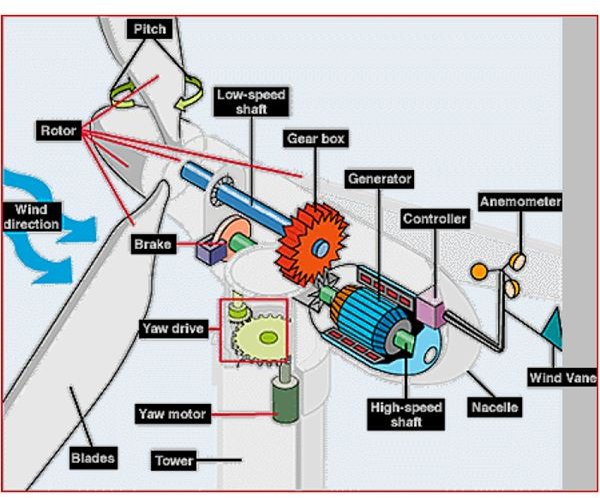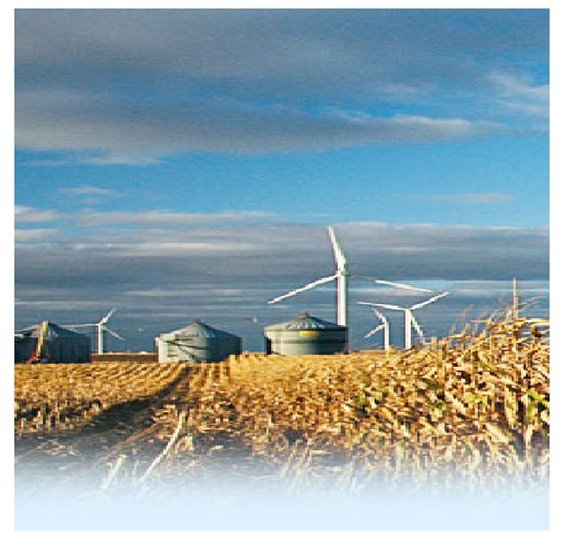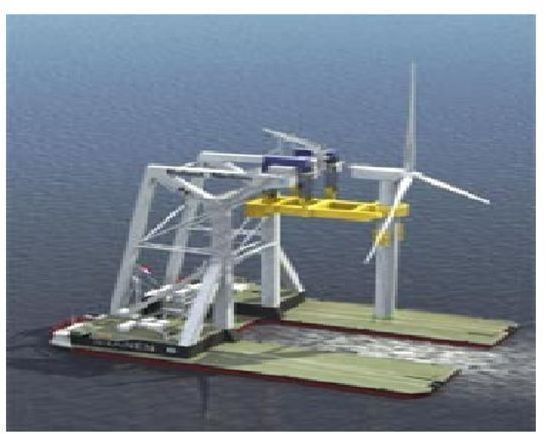Pros and Cons of Wind Farms
Windfarms are made up of many wind turbines producing renewable energy. There have been many developments in this technology, increasing the wind turbine output and efficiency along with a reduction in noise.They can be located offshore as well as on land, the offshore wind turbines being of a much larger capacity. The following sections examine the pros and cons of windfarms.
Components and Operation of a Wind Turbine.
A wind turbine is constructed from the following three basic components;
1. Rotor
The rotor consists of a nosecone with usually three blades bolted onto it. The blades are mostly now being manufactured from a fibreglass and carbon fibre mix; being up to 200ft in length, and one of these beasties could weigh in at 13 tons, depending on its material composition.
The nosecone also houses the blade pitch control, operated by hydraulics via main controller.
2. Nacelle
The nacelle it is made from fibreglass, being water and wind proof, and houses the following components:
- Main drive shaft – manufactured from high tensile steel, this is driven by the rotor blades.
- Gearbox – the main drive shaft is connected to the input side of the gearbox that increases the speed of the output shaft, which drives the generator.
- Generator – various designs depending on output, produces the electrical power to grid as well as the units control system.
- Brakes – hydraulically operated manual and automatic brakes, fitted to the main drive shaft Used to stop the rotation of the turbine in emergency and for maintenance.
- Main control box– various data such as wind speed, direction, and strength are fed into the controller where adjustments to yaw and pitch are made as required. Also monitors and controls power output and shaft speeds.
- Yaw control – this is located on the interface between the nacelle and tower, operated by hydraulics via the main control box.
- Wind vane and anemometer – located on the tail of the nacelle, these instruments measure the wind characteristics, transmitting the values to the main control box.
3. Tower – main support for the nacelle which is bolted onto the top of it. It is fixed to the ground by a bottom flange through ring of bolts grouted into the concrete foundations.
The Pros and Cons an Ongoing Debate
Windfarm Pros
- Renewable energy produced which emits no greenhouse gases.
- Numerous turbines can be easily connected to form windfarm.
- Agriculture can normally be carried on at the location of the windfarm, crops being cultivated and animals grazing freely.
- Power generated by windfarms saves dwindling supplies of fossil fuels.
- Wind turbines have become more efficient so do not need to be situated on crests or hill for optimum wind supply.
- More aesthetic due to selection of natural colours.
- Community participation has led to many local project funding as well as reduced cost of supply
- Windfarms are suitable for supplying power to outlying communities.
Windfarm Cons
- The wind does not blow all the time therefore the machines cannot ensure a regular supply to the grid.
- Some members of the community find them an eyesore citing them as being a blot on the landscape.
- Can be noisy, especially from the gearboxes in the older types but also from the swish of the blades.
- Can cause flicker, annoying to vision.
- Bird strikes are common resulting in the death of some rare birds such as eagles.
- Disturbance and loss of farmland due to access roads and area taken up by windfarm.
- Country roads being blocked by slow moving turbine transporters.
- Overhead power transmission lines from wind farms detract from the natural countryside tranquillity.
Summary
There are many views held by the general public regarding the pros and cons of siting of windfarms, but we need to produce power from renewable energy sources; so what is required is a compromise between the two factions.
According to statistics, once a windfarm has been built and commissioned, people become used to them, even finding they have a soothing effect.
The main objection to windfarms is their effect on the landscape, followed by noise and flicker effect from the blades.
The renewable energy supporters, advocates of carbon reduction through renewables, are for the continued use of land based windfarms.
If the windfarms were located offshore in deep water renewable energy could still be produced without anyone seeing the windfarms or transmission cabling. As suitable locations for onshore windfarms are becoming scarce along with opposition, locating them offshore is looking like a more attractive proposition.
Images





Internet Sites Visited
https://www.offshore-energy.nl/?gclid=CJbox_vE66ECFRg8lAodwmn0Ig